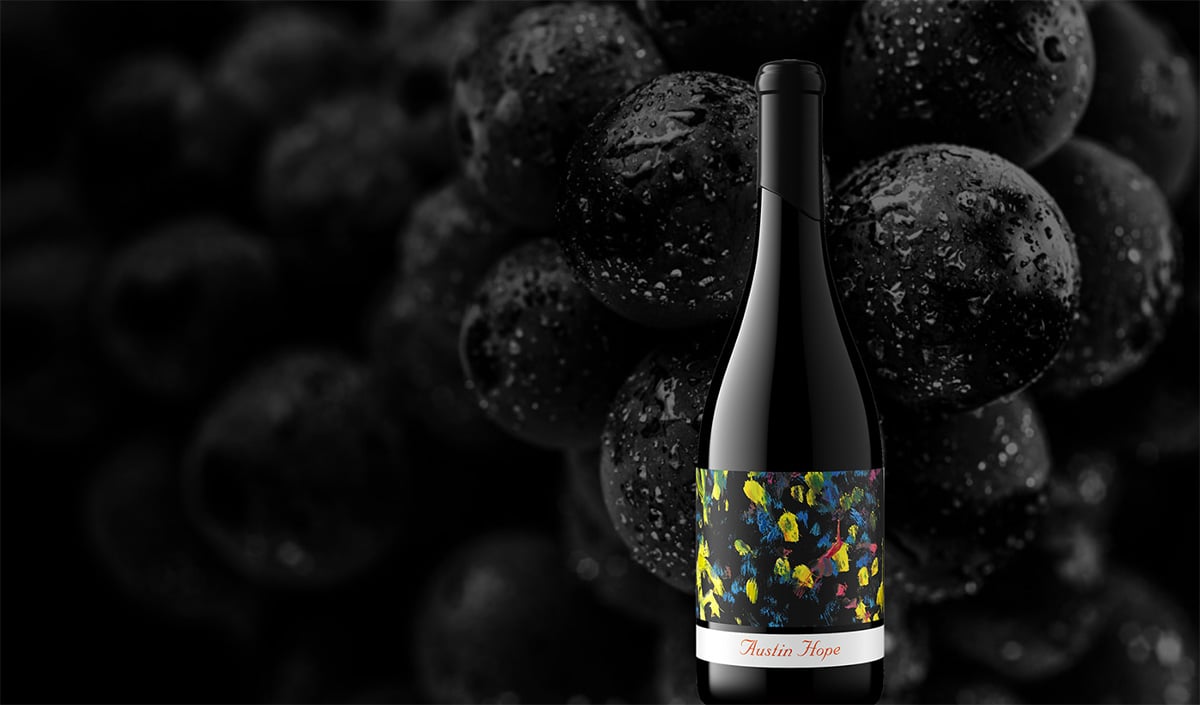

Over the last several years we’ve noticed that more and more winemakers have been moving away from the more traditional style wine labels and have been exploring more imaginative designs. This trend follows a similar trend that we’ve seen in the craft beer industry over the years.
Cool names and stand-out labels have been a driving force in the craft beer industry for years now, but wine has always been deemed more sophisticated than beer throughout history and thus the art on the wine label usually mimics the more traditional look and feel.
This may have been the way in the past, but did you know that, whether they like to admit it or not, about 80% of wine consumers buy a bottle of wine based on the label… This is sort of the equivalent of judging a book by its cover.
Thankfully, when it comes to wine, you at least kind of know what you’re getting in terms of the type of wine, just based on the label. Most labels in the United States now have the varietal on the label as opposed to the region the wine is from. This makes it easier to identify the type of wine quickly without having to do any research.
This practice was adopted as the standard in the United States in the 1970’s and since then wine labels in the U.S. and around the world, have continued to move further away from those long-standing traditions of wine bottle labeling.
A Brief History of Wine Bottle Labels
Some of the earliest known wine bottles labels date back to ancient Egypt around 1550 B.C. This wine, which were stored in clay jars (not glass bottles), were found in the tombs of Egyptian pharaohs and were stamped with important information related to the wine itself. Things like the region, vintage, wine type, winemaker, and more. These earliest wine labels were more for keeping track of the types of wine in the bottles rather than as a marketing technique.
Wine drinkers would have to wait a long time before the glass wine bottle was created, so instead, between 1550 B.C. and the 1700’s, wine was typically stored in clay pots and jars, or larger quantities were stored in wooden barrels, which are still used today as part of the wine aging process.
In the 1700’s glass wine bottles changed the way wine was served and stored forever and it’s at this point that we start to see the more traditional wine label style. While bottles in the 1700’s still did not have adhesive labels stuck to the glass, they did start to have pieces of parchment tied to the necks of the bottles that had all of the information about the wine.
It wouldn’t be until the 1800’s that you would start to see better printing methods coming into fruition that allowed winemakers to print more colorful and vibrant labels for their wine, which would then start to become the wine labels that we know today.
In the early 1900’s the first wine label commissioned by an artist was completed for Baron Philippe de Rothschild for his wine labels and from there winemakers around the world realized that a great way to stand out in the market is to have eye popping artwork on their labels.
Modern Wine Labels
As we get into the modern age of wine and winemaking, marketing becomes more important than ever. With so many winemakers and wine brands making their way to the public it’s important to stand out in whatever way you can. By creating interesting and beautiful wine labels that draw in the consumer, winemakers started to realize that a lot of consumers are buying wine based on the label and not necessarily all of the information that is relayed on those labels.
One of the most important things for any wine label to have today is the varietal of the wine, whether it’s a Cabernet Sauvignon or a Pinot Noir, the wine label should indicate the type of wine it is because a lot of consumers do know what they like and will typically stick those those wines they are familiar with, but not necessarily the brand.
Having a brand label that stands out, but also informs the consumer of what they’re getting is extremely important when it comes to wine marketing. A flashy label is great, and will grab a person’s attention as they are browsing the wine aisle, but if they can’t figure out if it’s the type of wine they like, they are going to pass over it move on to the next bottle.
Modern Traditional Wine Labels
As we talk about the shift in wine labels becoming more vibrant, colorful and eye-catching, that doesn’t mean that all modern wine labels have moved in that direction.
Here at Hope Family Wines we like to mix a bit of traditional labeling with new school flair depending on our brands.
Some wine varietals are just known for being those more traditional styles with long, rich, histories, so we have designed some of our wine labels to have more of that traditional feel with a modern flair to it.
Our Austin Hope line of wines fit that mold and has more of that old-world feeling to the wine labels. Traditional text that showcases what the wine is, where it’s from, and who made it – simple. While some of our other lines, like our Treanna and Liberty School opt for the more modern style of wine labels.
There are many bottles of our wine that hold a special place in our hearts due to the labels themselves. These wine labels have been designed by members of the Hope family with a couple of them getting help from members of the animal kingdom.

Austin & Celeste Hope traveled to Thailand for their honeymoon where they got to visit an incredible Elephant sanctuary in Chiang Maim. It was here that they got to walk with and feed the animals, as well as help guide their trunks around large canvases with paintbrushes. The original artwork painted by those magnificent creatures was then incorporated into what you see today on our Austin Hope Grenache and our Austin Hope Syrah. Celeste Hope guided the elephant’s trunk to help paint the Grenache, while Austin and his elephant painted the Syrah label.

In addition to having help from Asian elephants, the Mourvedre label was painted by their oldest daughter Ainsley when she was 8 years-old. The original painting of the boar figure was done with her fingers and mud.
The GSM label was created by Avery, the youngest daughter, when she was in 4th grade on an art field trip to Studio on the Park. She created a lithograph and called it “Burning Sun” which is exactly what those varietals thrive in – heat.
The Mourvèdre Syrah label was painted by Austin one night while trying to think of a design that unites the whole family. All of the birthdays in his family fall on one week in May. Ainsley, the oldest daughter, is the only June birthday and has always felt a little left out. Know that, he combined the Taurus and Gemini astrological signs to become one and calls it our Family Crest.
Wine Bottle Labeling
Wine bottle labeling has changed quite a bit over the years from etchings into clay pots to the brightly colored adhesive labels we see on store shelves today. As the industry shifts and the demographics change, we could see more and more creative wine labels hitting the market geared towards catching your eye rather than pleasing the taste buds.
At Hope Family Wines you can rest easy knowing that all the wine we produce, regardless of how the label looks, is going to be made with love and the utmost expertise. We pride ourselves on having some of the best tasting wines in the world and don’t need to hide it behind a flashy logo, our wine speaks for itself.